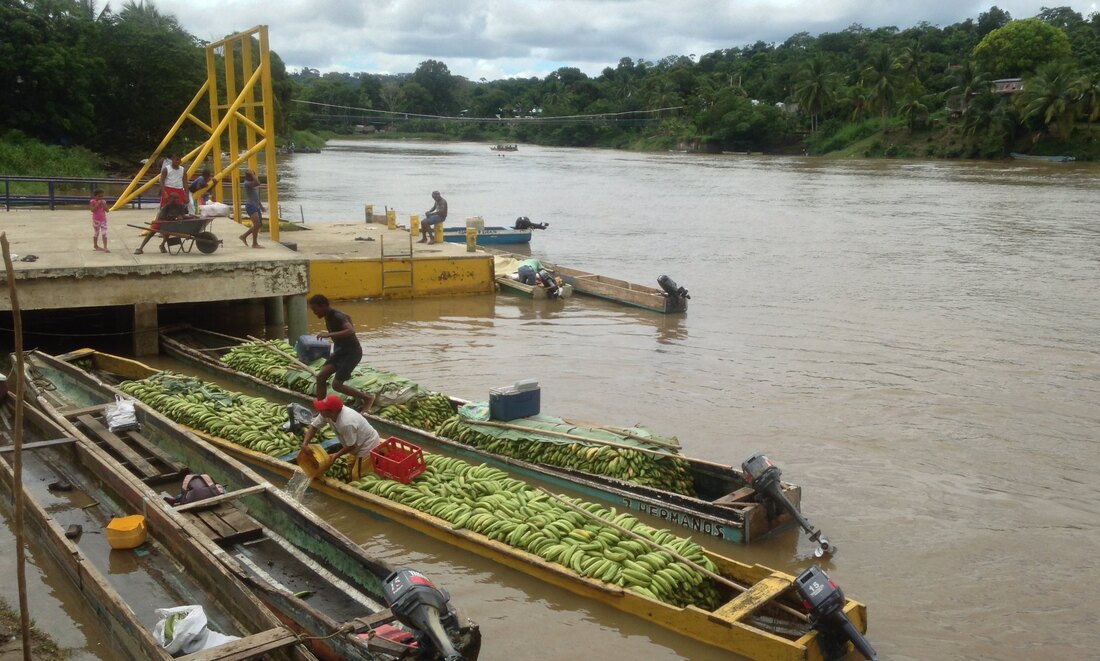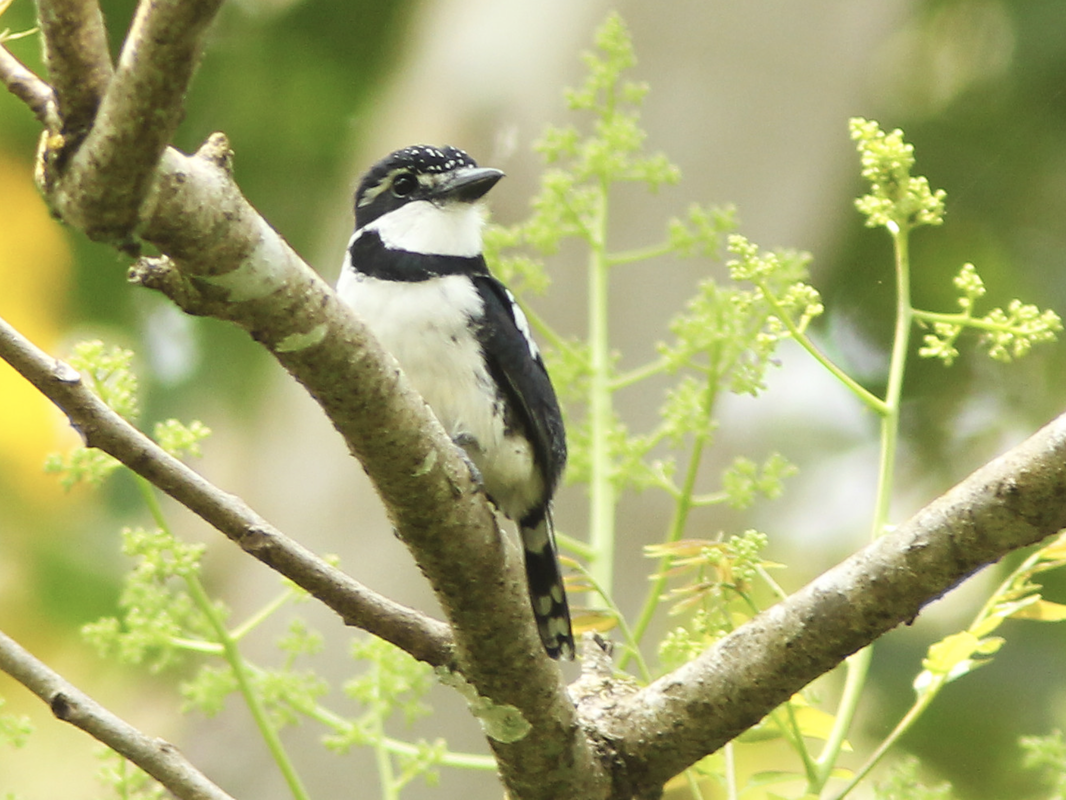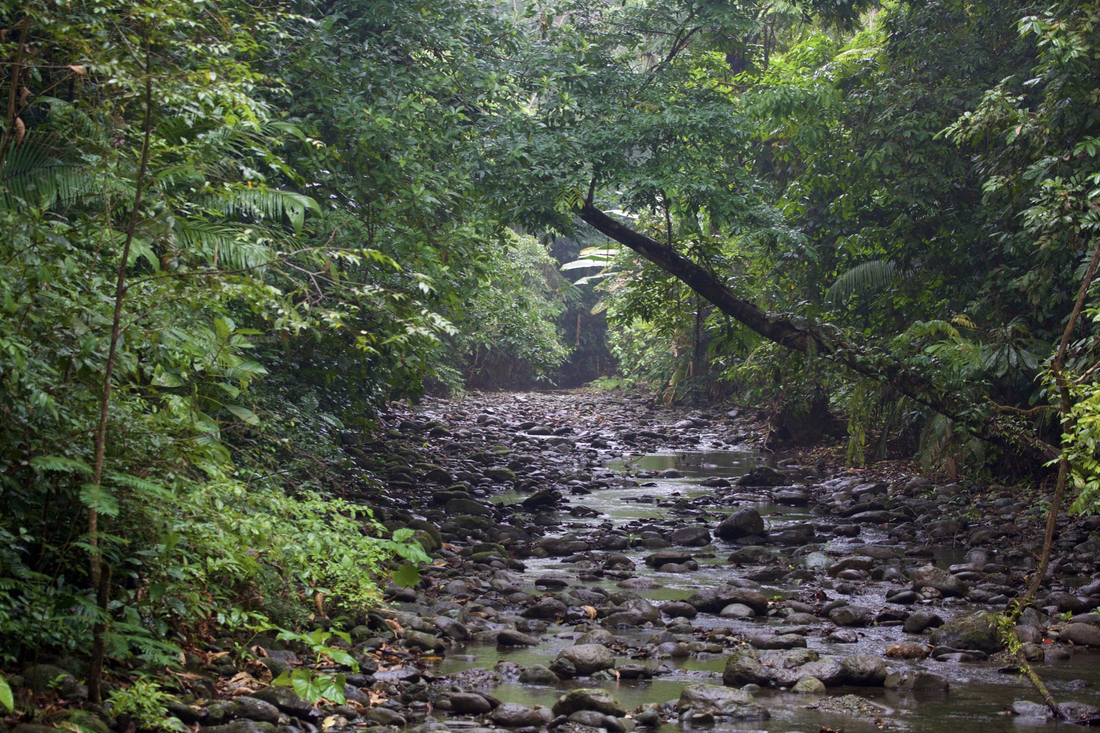|
The Spanish conquest of Panama began in 1510, precisely in Darién, with the foundation of the city of Santa María, now the border with Colombia, entrusted to Vasco Núñez de Balboa. This city of the ancient Darién was the capital of Castilla de Oro until the foundation of Panama City. In 1513, Balboa decided to open the famous way to the Pacific Ocean seeking the other sea and the gold. The tough expedition, muggy weather, steep forest and violent confrontations with native communities, compensated his effort with the wonderful gulf that was baptized by him and took the name of San Miguel. Daríen is famous because of its exuberant and inaccessible forest which interrupts the Pan-American Highway that occupies 16031.37 miles from Alaska in North America to Buenos Aires in Argentina and connects the capital with the rest of the continent. In Yaviza, know as Tapón del Daríen (Darien's Plug) and located 171.49 miles away from Panama City, the highway turns into fluvial forests, rivers represent the communication routes through which different-size ships pass, among which are extended Indian canoes, pirogues or canoes appertaining to local communities. This area has a small population. Thanks to that, one of the richest ecosystems in the world has evolved there, with an exceptional diversity of flora and fauna. The area registers also a high level of endemism. The National Park of Darién was inscribed as a World Heritage Site by UNESCO and in 1982 as a Biosphere Reserve that occupies 3598.36 miles, forming a vast range of habitats; among which are the following: sandy beaches, rocky coasts, plentiful rivers, mangrove swamps, clearly rainy forest and cloudy forest.
Its vegetation is dense. Trees can even exceed thirty-five meters in height and from a sort of ceiling where a semidarkness is kept inside, favoring this way the growth of huge epiphyte and parasitic plants, in addition to the thick lianas. As expected, Darién is the habitat of an astounding fauna where howler monkeys, spider monkeys and other primates, capybaras, giant anteaters, ocelots, jaguars, sloths, crocodiles stand out. It is also a real paradise for amateur bird watchers.
1 Comment
|
AuthorAll people can be part of this blog, tell us about your experience in San Blas Islands or some tips for traveling to Panama. Archives
February 2024
Categories |
- Home
- SAN BLAS TOURS
- PANAMA TRAVEL | OTHER TOURS
- Boat Panama/Colombia/Panama
- MULTI-DAY TOURS
- PRIVATE TRANSFERS
- CONTACT
- ABOUT US
- FAQ
- Home
- San Blas Tours
- DESCUBRE PANAMÁ | OTROS TOURS
- MULTI-DAY TOURS
- Bote Panama/Colombia/Panama
- SERVICIO DE TRANSPORTE
- Contacto
- SOBRE NOSOTROS
- FAQ
- Home
- SAN BLAS TOURS
- SCOPRI PANAMÁ | ALTRI TOURS
- MULTI-DAY TOURS
- Barca Panama/Colombia/Panama
- SERVIZIO DI TRASPORTO
- Contatti
- CHI SIAMO
- COME PRENOTARE UN TOUR?
- FAQ
SITE MAP:
BEFORE BOOKING A TOUR TO SAN BLAS
|
LA CASA DE PAPEL 3 | SAN BLAS
|
San Blas dreams
|
MAPA DEL SITIO WEB:
ANTES DE RESERVAR UN TOUR A SAN BLAS
|
NUESTRO BLOG
|
SAN BLAS DREAMS
|
MAPPA DEL SITO:
prima di prenotare un tour alle san blas
|
|
SAN BLAS DREAMS
|



 RSS Feed
RSS Feed








